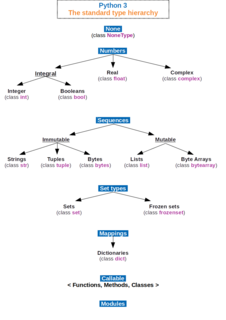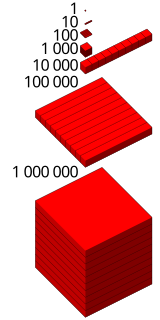
An algebraic number is any complex number that is a root of a non-zero polynomial in one variable with rational coefficients. All integers and rational numbers are algebraic, as are all roots of integers. The same is not true for all real numbers or all complex numbers. Those real and complex numbers which are not algebraic are called transcendental numbers. They include π and e. While the set of complex numbers is uncountable, the set of algebraic numbers is countable and has measure zero in the Lebesgue measure as a subset of the complex numbers, and in this sense almost all complex numbers are transcendental.
In number theory, two integers a and b are said to be relatively prime, mutually prime, or coprime if the only positive integer (factor) that divides both of them is 1. Consequently, any prime number that divides one does not divide the other. This is equivalent to their greatest common divisor (gcd) being 1.

An integer is a number that can be written without a fractional component. For example, 21, 4, 0, and −2048 are integers, while 9.75, 5 1/2, and √2 are not.
In computer science, an integer is a datum of integral data type, a data type that represents some range of mathematical integers. Integral data types may be of different sizes and may or may not be allowed to contain negative values. Integers are commonly represented in a computer as a group of binary digits (bits). The size of the grouping varies so the set of integer sizes available varies between different types of computers. Computer hardware, including virtual machines, nearly always provide a way to represent a processor register or memory address as an integer.

In mathematics, modular arithmetic is a system of arithmetic for integers, where numbers "wrap around" upon reaching a certain value—the modulus. The modern approach to modular arithmetic was developed by Carl Friedrich Gauss in his book Disquisitiones Arithmeticae, published in 1801.
1 is a number, and a numerical digit used to represent that number in numerals. It represents a single entity, the unit of counting or measurement. For example, a line segment of unit length is a line segment of length 1. It is also the first of the infinite sequence of natural numbers, followed by 2.

In number theory, a Gaussian integer is a complex number whose real and imaginary parts are both integers. The Gaussian integers, with ordinary addition and multiplication of complex numbers, form an integral domain, usually written as Z[i]. This integral domain is a particular case of a commutative ring of quadratic integers. It does not have a total ordering that respects arithmetic.

In computer science and computer programming, a data type or simply type is an attribute of data which tells the compiler or interpreter how the programmer intends to use the data. Most programming languages support common data types of real, integer and boolean. A data type constrains the values that an expression, such as a variable or a function, might take. This data type defines the operations that can be done on the data, the meaning of the data, and the way values of that type can be stored. A type of value from which an expression may take its value.
An integer programming problem is a mathematical optimization or feasibility program in which some or all of the variables are restricted to be integers. In many settings the term refers to integer linear programming (ILP), in which the objective function and the constraints are linear.
1000 or one thousand is the natural number following 999 and preceding 1001. In most English-speaking countries, it is often written with a comma separating the thousands unit: 1,000. In analogy to the term century for '100 years' the time lapse of 1,000 years is sometimes termed, after the Greek root, chiliad. A chiliad of other objects means 1,000 of them.
300 is the natural number following 299 and preceding 301.
400 is the natural number following 399 and preceding 401.
700 is the natural number following 699 and preceding 701.
600 is the natural number following 599 and preceding 601.
800 is the natural number following 799 and preceding 801.
900 is the natural number following 899 and preceding 901. It is the square of 30 and the sum of Euler's totient function for the first 54 integers. In base 10 it is a Harshad number.

1,000,000, or one thousand thousand, is the natural number following 999,999 and preceding 1,000,001. The word is derived from the early Italian millione, from mille, "thousand", plus the augmentative suffix -one. It is commonly abbreviated as m or M; further MM, mm, or mn in financial contexts.

1,000,000,000 is the natural number following 999,999,999 and preceding 1,000,000,001. One billion can also be written as b or bn.

In mathematics, a rational number is any number that can be expressed as the quotient or fraction p/q of two integers, a numerator p and a non-zero denominator q. Since q may be equal to 1, every integer is a rational number. The set of all rational numbers, often referred to as "the rationals", the field of rationals or the field of rational numbers is usually denoted by a boldface Q ; it was thus denoted in 1895 by Giuseppe Peano after quoziente, Italian for "quotient".








